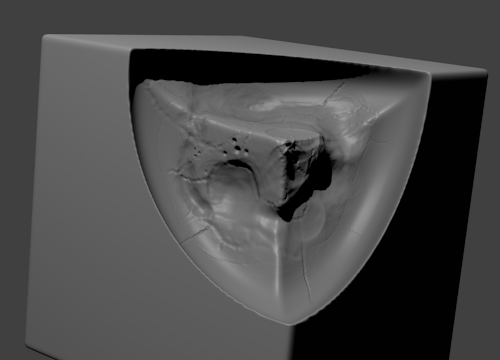I’ve mentioned blender before; it’s one of the open source projects that I’ve followed for years, a project that I love and one that’s has consistently impressed me since I spent a weekend learning the basics of its operation in 2002. At Cosmical Technology, we’ve been using blender for quite a while; some of the GEO|ADS graphics (e.g. the globe with the atmosphere originally used in the GEO|ADS service page), some of the AthensBook graphics and other creative work that we’ve been doing over the years are based on, or are themselves blender renders; we’ve used it for glass surfaces, cloth simulation (the ‘covered up’ icon we used in various presentations and this blog post from 2009) and many other features that were relatively recently added and take blender to a whole new level.
This open source project has been a staple of our ‘design’ arsenal for a while, and while it is by no means (yet) a competitor to the mid to high level commercial products that cost thousands of euros and people use exclusively for films and video games, it should definitely be in their radars as it’s going to be giving them a run for their money sooner than they expect.
Version 2.6 will bring an overhauled core, make most of the application scriptable/automated — in the process allowing for sophisticated add-ons (and hopefully a great community), improve performance (in some areas by a factor of 4-5x), and will introduce a rethinked UI that seems extremely promising. I’ve been goofing around with the 2.5 alpha builds ever since they appeared and while they were extremely unstable they were a great introduction to the new way of working with the application. Recently 2.54 (beta) came out and this is a build that seems to be usable for most of our work. One of the areas that blender 2.5x has I’ve dabbled a bit in the past few weeks is sculpting, a feature that was only found in specialised commercial software packages just a couple of years ago and one that’s still a hot topic.
In the process of acclimatising with sculpting in blender 2.54 I created a — trivially simple — 5 minute (wannabe) moon-like surface on a subdivided cube. The face count on this graphic was in the millions and blender performed admirably. There are still several catches (e.g. performance improves significantly if you start with a subdivided surface), and I’m sure that the final 2.6 will — once again — surprise everyone with how much better it is than the beta, but I’m extremely impressed by the work the blender developers have done.

In a few short years and with some additional work on a few key areas where blender is currently lacking (the built-in renderer and integration with external ones comes to mind), I’m sure that blender will become the choice of more and more professional 3d artists for their work, let alone amateurs like myself.
